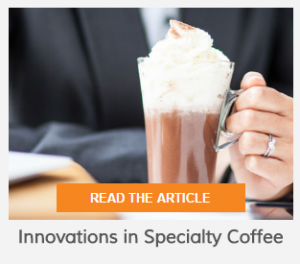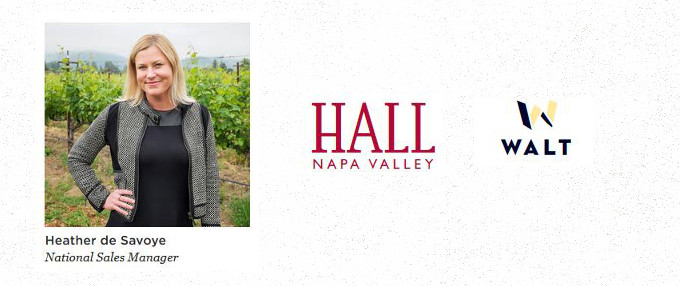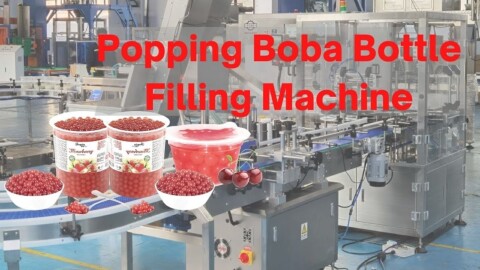It’s Go Time: Innovations in specialty coffee now make market entry easy for every operator
Specialty Coffee: Special is the new normal
The new, rarified world of specialty coffee demands we forget everything we know about the drink from flavor to preparation to price, and start fresh. But there’s no time to spare. With dramatic growth in the specialty coffee market – sales increasing by 20% per year, according to E-imports – it’s becoming a critical component to every menu and retailer.
Specialty coffee is just that: Special.
For most consumers today, it’s a luxury, an indulgence, and for many coffee shop owners, a frighteningly foreign prospect. Specialty doesn’t mean elitist. Indeed, this purified, pared-down iteration of coffee requires dedicated service and equipment, but the good news is that this new kind of coffee has brought with it new ways of preparing and serving that make it easier than ever for shops to join the trend. Innovative products are lowering the barriers to access and enjoy these special drinks. You’re busy, and your customers are too, but new technological advancements have made it easy to leverage this trend in your favor.
The Specialty Coffee Association of America defines specialty coffee as scoring 80 or above on a 100-point taste scale. It is further distinguished by being grown in unique microclimates and regions, whose distinctive terroir manifests in the flavors of the beans. In a new movement, coffee is returning to its roots, bolstered by the whole-food rustic-eating trends shaping the rest of the food industry. That means simpler drinks and specialized menus, focused on the beans not the blends. And when drinks are pared down, their preparations matter more. The methods are unique, but not challenging, even for new retailers. Specialty doesn’t need to be restrictive — its high-end profits are available for any business.
Crafting the Perfect Cup
Ironically, low-end, relatively simplistic technology is often a good way to highlight the unique characteristics of specialty coffee, from pour-over cones like the popular Hario V60 to the French press. Other low-tech methods include the simple, three-piece AeroPress or the Clever, which has improved the standard pour-over technique with an immersion dripper that holds beans in water before releasing them through a filter, allowing a coffee’s flavors to “bloom” before serving. Vacuum-operated siphon systems, popular in Japan, are entering the US market — New York’s Blue Bottle boasts a dedicated siphon-coffee-only bar.
These seemingly simple brewing methods, however, require a barista with specialized knowledge of how specific beans and drinks should be prepared. Good news for businesses entering the specialty coffee space, however, comes in the form of advanced machinery that automates much of the precision required in brewing with specialty beans. These innovations produce specialty coffee in less time, with less labor.
For single-cup, traditional coffee brewing (that is, not espresso-based drinks), the world changed first in 2007 with the Clover – invented by Stanford engineers to maintain the perfect water temperature for brewing. Then came the Blossom One, developed in MIT labs to hold preset brewing recipes geared toward specific beans and drinks. Other precision single cup brewers like the Steampunk have emerged as well.
Espresso-making has advanced apace. La Marzocco, the leading espresso-machine manufacturer since pioneering the technology in the 20s, recently debuted the Linea PB featuring technology that uses scales in the drip trays to ensure shots are pulled to the appropriate volume and auto-brew ratio controls. Meanwhile, NESCAFÉ Milano marries the control of the Linea with the pre-programmed simplicity of single cup brewers like the Clover. With the push of a button, baristas can dispense perfectly calculated lattes, cortados, cappuccinos — even flavored versions for customers not yet ready for a more austere specialty experience.
Now restaurants, hotels and retailers who do not specialize in coffee alone don’t need specially trained staff to offer consistent high quality espresso-based drinks to their customers, making it easy for most operators to get in the game.
The Story of Coffee
The so-called Third Wave is much more than another chapter in coffee’s long life story. We’re at a moment when revolutionary technology is, for the first time in centuries, reshaping all at once how coffee is served, consumed, and imagined in our culture.
As most of our days start with a cup of coffee, so began the modern era. Coffee is ancient in parts of the world, but in Europe, the humble drink came of age in the Enlightenment, fueling talk of discovery and Revolution, politics and protest, art and science. And yet, in light of all the changes that have rocked the modern world since Samuel Johnson, Thomas Payne and Benjamin Franklin toasted its birth over mugs of joe, coffee itself has remained steadfast. Innovation, in other words, has been rare.
For centuries, coffee was prepared and served as it had been since its origins: roasted, ground, and boiled. Then the nineteenth century brought us the percolator; the Industrial Revolution brought coal and steam power and, with them, large-scale roasting and espresso brewing. Wartime innovation created instant coffee, paper filters, and a boom in at-home drinking — coffee’s so-called First Wave, led by companies like Nestlé and Folgers.
The next half-century introduced innovations in the philosophy of consumption more than coffee’s literal preparations. Coffee shops returned to their Victorian-era prominence, becoming “third place” gathering spots (not home, nor the office). Starbucks and Peets started west and expanded cross-country, but the coffee made there wasn’t much different than that made at the first documented coffee shop in fifteenth-century Turkey. But the tides have (finally) turned; many cultures are broadening their coffee palates and specialty is the new black.
All this is great news for drinkers and servers of specialty coffee. The shifts in coffee culture have opened doors to new streams of revenue for most businesses. Revolutionary technology, both high-end and low-, has entered — or in some cases, re-entered — the market, making it easier than ever for coffee shops to adopt the unique brewing and serving requirements of specialty coffee, and fulfill the growing consumer demand.
Read more about 2016 Coffee Trends for insights on how to delight your customers.









